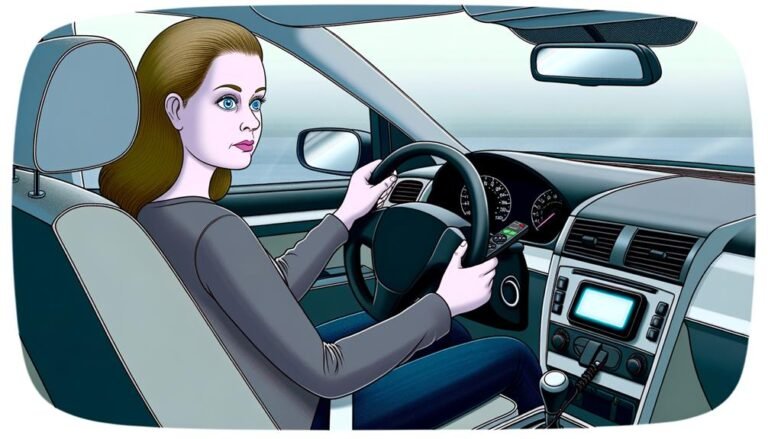Empathy meets Technology: Harnessing the Power of a Communication Board for Aphasia
Communication Boards Overview
Communication boards are game-changers for folks who have trouble speaking, like those with aphasia. These boards use pictures and symbols to help people get their thoughts across when words just won’t come out.
Why Communication Boards Matter
Communication boards are a simple yet powerful tool that can make a world of difference. They help people say what they need, want, or feel, which is super important for living independently and feeling good about life. Organizations like Lingraphica even offer free boards that cover basic needs and medical terms, making them handy in everyday and hospital settings.
For those with aphasia, these boards are lifesavers. They provide a way to communicate when speaking is tough, cutting down on frustration and helping people connect with others.
Types of Communication Boards
There are different kinds of communication boards, each designed to meet specific needs. Here’s a quick look at some common types:
| Type of Communication Board | Description |
|---|---|
| Picture Communication Board | Uses images or symbols to represent words or phrases, making it easier for users to convey messages. Learn more about picture communication boards. |
| AAC Communication Board | Specifically designed for augmentative and alternative communication, often used in therapy and schools. Explore AAC communication boards. |
| Communication Board for Stroke Patients | Focuses on vocabulary that helps stroke survivors during rehab. Discover more about communication boards for stroke patients. |
| Communication Board for Autism | Tailored to support people with autism, focusing on social communication and emotional expression. Check out communication boards for autism. |
Each type of board has its own perks, so picking the right one is key to making communication easier and more effective.
Communication Boards for Aphasia
Benefits of Communication Boards for Aphasia
Communication boards are a game-changer for folks with aphasia, making it easier for them to share their thoughts and needs. These boards simplify talking and give a clear way to express themselves.
| Benefit | Description |
|---|---|
| Enhances Communication | Communication boards help people say what they want or need, making conversations smoother. |
| Low-Tech Solution | No fancy gadgets needed—these boards are easy to use anywhere, anytime. |
| Customizable | You can tweak the boards to include words and phrases that matter most to the user, like health terms (Aphasia). |
| Supports Different Communication Levels | They work for everyone, from those who need a lot of help to those getting better at talking on their own. |
Features of Effective Communication Boards
A good communication board should have certain features to make it user-friendly and accessible for people with aphasia. These features ensure the board is practical and meets the user’s needs.
| Feature | Description |
|---|---|
| Clear Visuals | Use pictures, symbols, and words that are easy to recognize and understand. |
| Organized Layout | Arrange words and phrases logically so users can find what they need quickly. |
| Personalization | Customize the board with words and phrases relevant to the user’s daily life. |
| Size and Portability | Make sure the board is lightweight and easy to carry, so it can be used anywhere, from home to the hospital. |
| Multi-Purpose Use | The board should help in different situations, like medical appointments or social gatherings. |
Communication boards for aphasia are a friendly and supportive way to improve interactions for those dealing with this condition. They promote independence and make communication better for both individuals and their caregivers. For more tips and resources, check out our sections on communication boards for autism and communication boards for stroke patients.
Making Communication Boards Work
Helping folks with aphasia use communication boards effectively means getting the right training and putting them to good use. Here’s a simple guide to get you started.
Learning to Use Communication Boards
Training is key for both the person using the board and their communication buddies. Speech-language pathologists (SLPs) are the go-to experts here. They figure out what’s needed and suggest the best tools to help people communicate better.
One popular method is Communication Partner Training (CPT). Programs like Supported Conversation for Aphasia (SCA) have been a hit in many healthcare settings. They teach techniques to make chatting easier, so folks can share their thoughts and needs more clearly.
Training should cover:
| What to Learn | What It’s About |
|---|---|
| Understanding Aphasia | Learning about aphasia and how it affects communication. |
| Getting to Know the Board | Teaching how to use the communication board. |
| Practice Makes Perfect | Role-playing real-life scenarios to get comfortable with the board. |
| Ongoing Help | Continuous support and resources for everyone involved. |
Putting Communication Boards to Use
Using communication boards takes some planning to make sure they fit the user’s needs. Whether it’s a picture communication board or a specialized AAC board, here’s how to get started:
-
Assessment: Work with an SLP to figure out what the person with aphasia needs. This helps in picking the right words and symbols for the board.
-
Customization: Make the board personal. Include words and pictures that are relevant to the user’s daily life. Tools like the “I Can Say it With Symbols Picture Communication Book for Adults” can be handy (Say It With Symbols).
-
Daily Use: Encourage using the board everywhere—at home, school, or the doctor’s office. The more it’s used, the more comfortable everyone gets.
-
Team Effort: Set goals together using methods like Goal Attainment Scaling (GAS). This helps track progress and make changes as needed. Working with users and caregivers ensures the goals are meaningful (NCBI).
-
Feedback: Create a way for users and their partners to share what’s working and what’s not. This helps improve the board over time.
With the right training and thoughtful use, communication boards can make a big difference for people with aphasia, helping them express themselves more easily. For more info on different types of communication boards, check out options for communication boards for stroke patients or those designed for communication board for autism.
Boosting Communication Skills
Helping folks with aphasia communicate better isn’t just important—it’s a game-changer. Two big pieces of the puzzle are teamwork and setting clear goals.
Teamwork for Aphasia
Teamwork means everyone pitching in to help someone with aphasia communicate. Speech-language pathologists (SLPs) are the MVPs here. They figure out what’s tripping people up and suggest ways to make talking easier (NCBI). One cool method is Communication Partner Training (CPT), like the Supported Conversation for Aphasia (SCA) program. This program has trained all sorts of pros—medical students, nurses, occupational therapists—to better communicate with folks who have aphasia.
Working together not only makes talking easier but also creates a supportive vibe. Here’s a quick look at who’s involved:
| Who | What They Do |
|---|---|
| Speech-Language Pathologists | Find and suggest ways to help communicate |
| Healthcare Pros | Use these strategies in clinics and hospitals |
| Family Members | Offer emotional support and help with talking |
| Teachers | Help with learning and talking in schools |
When everyone chips in, communication gets a whole lot better for those with aphasia.
Setting Goals and Making Plans
Setting goals is another biggie for helping folks with aphasia. Techniques like Goal Attainment Scaling (GAS) have shown to make a real difference in rehab, whether you’re in the hospital or at home. Here, clients and therapists pick goals together, see how important they are, and check progress later (NCBI).
Making personalized communication plans also works wonders in places like hospitals and rehab centers. These plans outline what the person can do and what they prefer, making sure their choices are front and center.
| Part of the Plan | What It Covers |
|---|---|
| Communication Abilities | What they’re good at and what’s tough |
| Preferred Strategies | Tools and techniques they like |
| Who’s Involved | People helping with communication |
| Tracking Progress | How to check if things are getting better |
With clear goals and personalized plans, folks with aphasia get the support they need to talk more easily. If you’re curious about more tools, check out a communication board for autism for ideas on how visual aids can help with talking.
In the end, teamwork and clear goals are key to helping people with aphasia communicate better. By getting everyone involved and focusing on what works best for each person, we can make talking easier and more effective.








